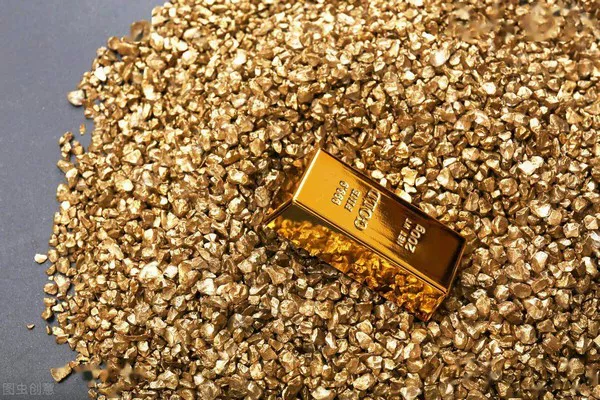In a world where counterfeit products abound, distinguishing authentic gold from its imitations has become a crucial skill. Whether you’re an investor, jeweler, or simply an enthusiast, being able to discern genuine gold from its faux counterparts is essential. With various testing methods and tools available, it’s imperative to understand the techniques and principles behind identifying real gold. This comprehensive guide will walk you through the process, equipping you with the knowledge to confidently ascertain the authenticity of gold.
Understanding Gold’s Properties
Before delving into detection methods, it’s vital to grasp the fundamental characteristics of gold. Gold is a dense, soft, and malleable metal renowned for its distinctive luster and corrosion resistance. Its chemical symbol, Au, stems from the Latin word “aurum,” meaning “shining dawn.” Gold’s inherent properties, such as its density and conductivity, serve as the basis for many testing methods.
Density Testing: The Archimedes Principle
Density testing relies on the principle established by the ancient Greek mathematician Archimedes. According to Archimedes’ principle, an object immersed in a fluid experiences an upward buoyant force equal to the weight of the fluid it displaces. Genuine gold exhibits a specific density, typically around 19.32 grams per cubic centimeter (g/cm³). By measuring the density of a gold sample and comparing it to the known value, one can determine its authenticity.
Magnetism Test: Gold’s Non-Magnetic Nature
Gold is not magnetic, unlike many other metals such as iron and nickel. This property makes magnetism testing a simple yet effective method for distinguishing real gold from fake. If a purported gold item is attracted to a magnet, it’s likely a counterfeit or contains significant impurities. However, it’s essential to note that some alloys used in jewelry may exhibit slight magnetic properties, so this test should be used in conjunction with other methods for accurate results.
Advanced Testing Methods
While density and magnetism tests offer initial insights into gold authenticity, advanced methods provide more precise and conclusive results.
Acid Testing: Reactivity to Chemicals
Acid testing involves applying specific acids to a gold sample to observe its reaction. Since gold is a noble metal, it does not react with most acids except for aqua regia, a mixture of nitric acid and hydrochloric acid. By applying a small amount of acid to the surface of the gold and observing any changes, one can determine its authenticity based on the reaction.
Acid Testing Procedure:
- Choose a discreet area of the gold item for testing, preferably an inconspicuous spot.
- Scratch the surface of the gold gently to create a small mark.
- Apply a drop of the testing acid to the scratched area and observe the reaction.
- Genuine gold will not react or show any signs of discoloration, while fake gold or gold-plated items may exhibit a reaction, such as fading or bubbling.
X-Ray Fluorescence (XRF) Analysis: Elemental Composition
X-Ray Fluorescence (XRF) analysis is a non-destructive technique that provides detailed information about the elemental composition of a material. XRF analyzers emit X-rays onto the surface of a gold sample, causing it to emit fluorescent X-rays characteristic of its elemental composition. By analyzing the emitted X-rays, XRF technology can accurately determine the presence and concentration of gold and other elements in a sample.
XRF Analysis Process:
- Prepare the gold sample by cleaning and ensuring its surface is free of any contaminants.
- Place the sample in the XRF analyzer and initiate the analysis.
- The analyzer emits X-rays onto the sample, causing it to fluoresce.
- The emitted X-rays are detected and analyzed to determine the elemental composition of the gold.
Common Misconceptions and Pitfalls
Despite the availability of various testing methods, misconceptions and pitfalls surround the identification of real gold. Understanding these misconceptions is crucial for accurate assessment.
Color Test: Not Always Reliable
While many believe that genuine gold must possess a certain color, such as a deep yellow hue, this is not always the case. The color of gold can vary depending on its purity and alloy composition. For instance, white gold is an alloy of gold and other white metals such as nickel or palladium, resulting in a silver or platinum-like color. Therefore, relying solely on color as a determining factor for gold authenticity can be misleading.
Hallmark and Stamps: Not Foolproof Indicators
Hallmarks and stamps engraved on gold items often indicate their purity and authenticity. However, counterfeiters have become adept at replicating these marks, making them unreliable indicators of gold authenticity. Additionally, some counterfeit items may bear genuine hallmarks obtained through illegal means, further complicating the identification process. Therefore, while hallmarks can provide useful information, they should not be solely relied upon for authentication.
See Also How Many Grams Is A 22 Carat Gold Chain
Conclusion
Distinguishing real gold from its imitations requires a combination of knowledge, skill, and the use of appropriate testing methods. By understanding the fundamental properties of gold and employing advanced testing techniques such as density measurement, acid testing, and XRF analysis, one can confidently determine the authenticity of gold items. However, it’s essential to remain vigilant and aware of common misconceptions and pitfalls that may lead to inaccurate assessments. With diligence and a thorough understanding of gold testing methods, you can navigate the world of gold with confidence and precision.


